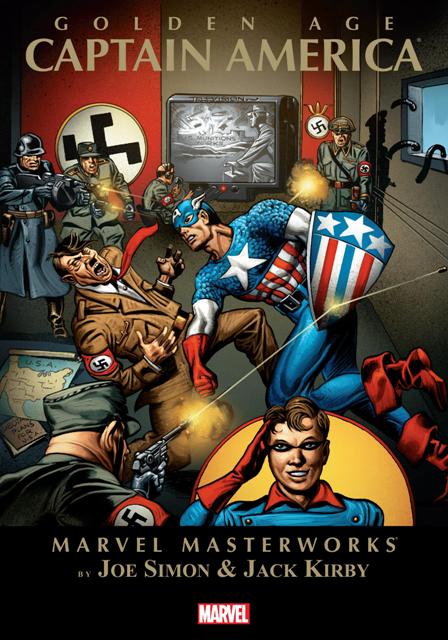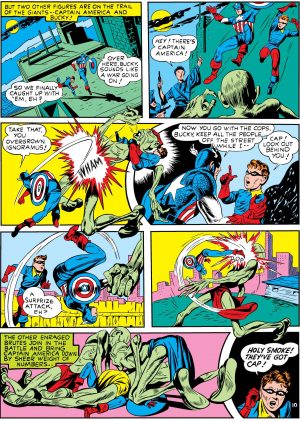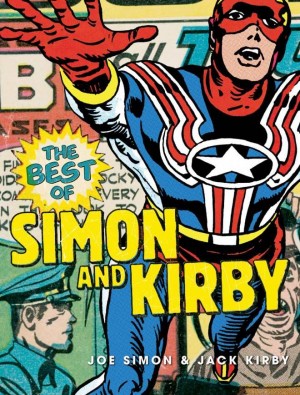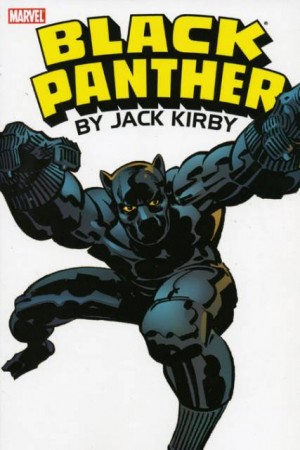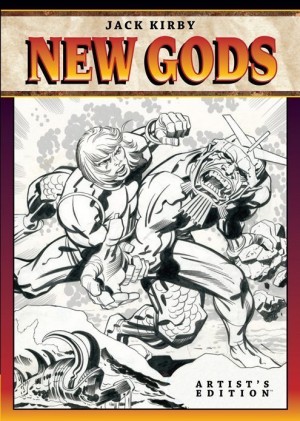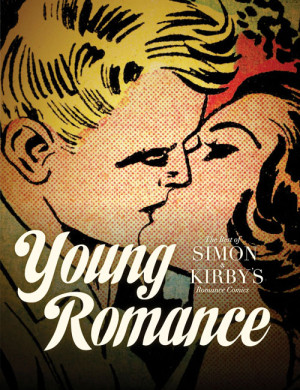Review by Jamie McNeil
Captain America, his fictional origins and his creation by Joe Simon and Jack Kirby is engraved in both American and pop culture lore. Actor Chris Evans’ role as the titular man out of time in the Captain America trilogy and associated Marvel Cinematic Universe has only cemented that further. To coincide with Cap’s 65th year his original adventures by Simon and Kirby were collected, the pages remastered and presented in hardcover.
When Steve Rogers is refused World War II military service, considered medically unfit, he is selected by a sympathetic Professor Reinstein for a government experiment. Injected with a secret serum, Rogers is physically transformed into a super soldier dubbed Captain America because, like Rogers, “America shall gain the strength and the will to safeguard our shores”. When Reinstein is assassinated by a Nazi infiltrator, Rogers captures the killer and dons the patriotic mantle of Captain America. With his sidekick Bucky Barnes he wages war against Nazi spies and all enemies of the United States of America.
In his introduction Roy Thomas opines that the appeal was because Captain America differed from contemporaries Superman or Batman by being a man of action, and because his creators acknowledged the threat Hitler and his Nazis posed to the world. Essentially, a good six to twelve months before America officially declared war Simon and Kirby were saying in their stories that if America believed it was the Land of the Free, it should enter the fray and defend the liberty of all people.
Compared to Kirby’s later work this is rudimentary, the cast’s features often elongated and disproportionate, though there’s an extraordinary dynamism to the action. When he’s static Captain America/Steve Rogers isn’t that interesting, but once the punches start flying the action is balletic in its energy. Kirby’s additional stories like ‘Hurricane, Master of Speed’ and ‘Tuk, Caveboy’ only emphasise that and hint towards the sense of grandeur that would set Kirby’s art apart. As the series became more popular Kirby produced less art, sticking to covers or opening pages. Among those artists now credited were future Hall of Famer Reed Crandall and Syd Shores, widely considered one of the best inkers of the industry. Even Simon would occasionally provide pencils or ink Kirby’s work and vice versa.
Whether it’s Simon or Kirby writing, the format is straightforward with the common aggressor Nazi sympathisers in the Fifth Column foiled by Cap’s and Bucky’s patriotism and courage. Initially it all takes place in the USA though Cap and Bucky make a fun foray into Europe to personally deal with Hitler and Goering. The stories do progressively run more like propaganda, the Nazis and their Allies dangerous vaudevillian morons. Admittedly that makes it more fun, but it’s clearly from another era, the attitudes understandably xenophobic accompanied by a large dash of youthful arrogance from its then twenty-something creators.
In addition to establishing the origins of Captain America and Bucky, it also introduces the Red Skull and Betty Ross. The influence of these stories on many artists and writers is inestimable, that cover of Cap punching Hitler now iconic on its own. This volume is available in hardcover, paperback or digital formats, or alternatively you can try and track down a second-hand collection online if you have $1,200,000 to spare for a near mint first issue or an easy $41,000 for a tatty copy.
These same stories can be found in the Golden Age Captain America Omnibus while more of Simon’s and Kirby’s original run on Captain America is collected in Marvel Masterworks: Golden Age Captain America Volume 2.
